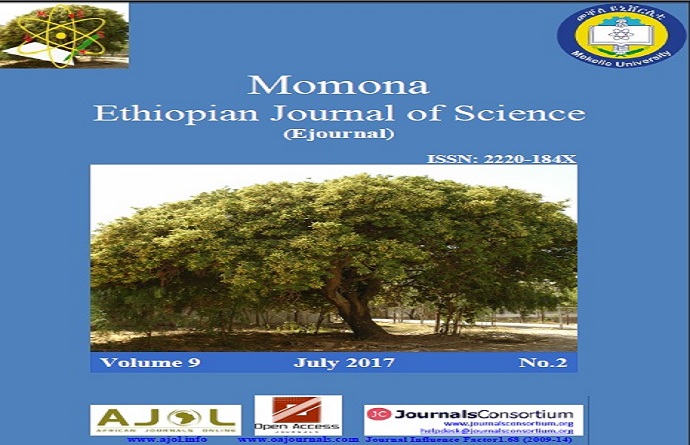Evaluation of Land Suitability for Selected Tree Species in the Mesozoic Highlands of Ethiopia
Abstract
This paper aimed at evaluating the potential of the different soil attributes for plantation of selected forest trees (Faidherbia albida, Eucalyptus camaldulensis and Balanitus aegiptica) dominantly grown in the northern highlands of Ethiopia. The study was conducted at Korir watershed, northern Ethiopia. The method used to evaluate the land suitability was based on the FAO approach for land evaluation for forestry. The results of the evaluation revealed that suitability classes of these trees range from highly suitable (S1) to permanently not suitable (N). Eucalyptus camaldulensis was highly suitable on the relatively gentle valley bottom and foot slope (6% of the area) having greater soil depth while unsuitable in majority (about 58%) of the area. Both Faidherbia albida and Balanitus aegyptiaca were suitable in more than 85% of the study area. The major limiting factors were the steep slope and shallow soil depth in major part of the area. Hence, evaluating the land potential for individual species and assigning these species based on their land requirements should be done before plantation so as to increase the trees' survival rate.
Downloads
References
Bekele, M. 2011. Forest Plantations and Woodlots in Ethiopia: a platform for stakeholders in African Forestry. African Forest Forum Working Paper Series, volume 1, issue 12, Nairobi, Kenya, 56p.
FAO. 1984. Guidelines: Land evaluation for forestry. FAO Soils Bulletin, No. 48, Rome, 123p.
FAO. 1995. Planning for sustainable use of land resources towards a new approach. FAO land and water Bulletin 2. Food and Agricultural organizations of the United Nations, Viale delle Terme di Caracalla, 00100 Rome, Italy.
More inside the PDF
Copyright (c) 2018 Momona Ethiopian Journal of Science

This work is licensed under a Creative Commons Attribution 4.0 International License.
COPYRIGHT AND LICENSE POLICY
The Momona Ethiopian Journal of Science accepts the manuscripts for consideration with the understanding that the manuscript has not been published and is not under consideration for publication elsewhere. Only original articles will be considered for publication if they have been published previously as abstracts, but not if they have been published previously as extended abstract (>1000 words). This applies to both electronic and print versions of the journal. The authors should assign copyright ownership to the Editorial Office of MEJS in the event that the manuscript is accepted for publication in the Momona Ethiopian Journal of Science. All accepted manuscripts must be accompanied by a copyright statement signed by all authors. A copy of the copyright form will be supplied along with the final reviewed version of the manuscript that is sent for final proof- reading. Authors may make multiple copies of the form if necessary and send to the Editorial Office with author’s signature(s) even individually.
All articles published by Momona Ethiopian Journal of Science (MEJS) are Open Access under the Creative Commons Attribution License (http://creativecommons.org/licenses/by/4.0). Under this license, authors retain ownership of the copyright for their content, and anyone can copy, distribute, or reuse articles as long as the author and original source are properly cited. In all these cases for re-use, the authors will be given proper credit to the original publication in MEJS.
